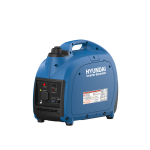Reiki healing is a gentle, non-invasive form of energy healing that promotes relaxation, reduces stress, and helps restore balance to the body, mind, and spirit. It has been used for centuries to treat a wide range of physical, emotional, and spiritual conditions, and is based on the belief that life force energy flows within us all. When this energy is low, stress, illness, and disease can occur. Reiki works by improving this life force energy and bringing about a sense of peace and wellbeing, enhancing a person’s quality of life.
What to Expect in a Reiki Healing Session
A typical Reiki healing session lasts around an hour, although sessions can vary depending on the practitioner and the individual’s needs. During a session, the client lies on a massage table, fully clothed, while the therapist places their hands on or just above specific energy locations on the body.
Reiki is a hands-off therapy, and there is no pressure, massage, or manipulation involved. The therapist acts as a conduit between the client and the universal life force energy, directing it to where it is most needed.
During a session, clients may experience warmth, tingling, or pulsing sensations where the therapist’s hands are placed. Alternatively, some people may experience no bodily sensations at all.
The experience is often very gentle, with perhaps sensations of heat, cold, or tingling appearing and moving through the body. Alternatively, quite strong effects are experienced at times, including strong emotions, heightened energy flow, an energy “high,” fatigue, detox effects, and digestive shifts.
How Reiki Works
Reiki works by improving the flow of life force energy, bringing balance and harmony to the body, mind, and spirit. It is drawn to where it is needed, accelerating the body’s innate healing ability.
The therapist places their hands on or just above specific energy locations on the body, directing the energy to where it is most needed. The energy flows through the therapist’s hands to the client, improving the flow and balance of energy, supporting healing.
Reiki Healing and Traditional Medical Treatments
Reiki is a complementary therapy that can be used alongside traditional medical treatments. It does not interfere with but supports other therapies and wellness practices, treating the whole person and directing healing energy to where it is most needed for healthy maintenance.
Conclusion
Reiki healing is a gentle and powerful form of energy healing that supports the body, mind, and spirit. It offers a wide range of benefits, from promoting deep relaxation and supporting natural healing to enhancing emotional wellbeing and improving immunity.
During a session, the therapist acts as a conduit between the client and the universal life force energy, directing it to where it is most needed. Reiki is a complementary therapy that can be used alongside traditional medical treatments, supporting the whole person and directing healing energy to where it is most needed for healthy maintenance.











